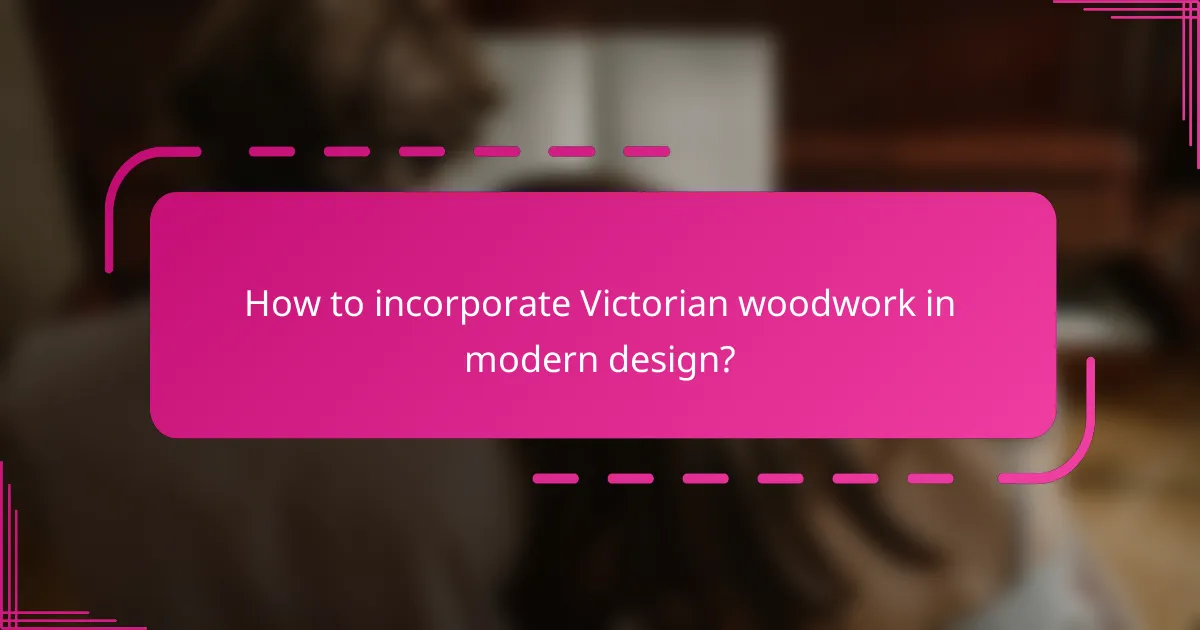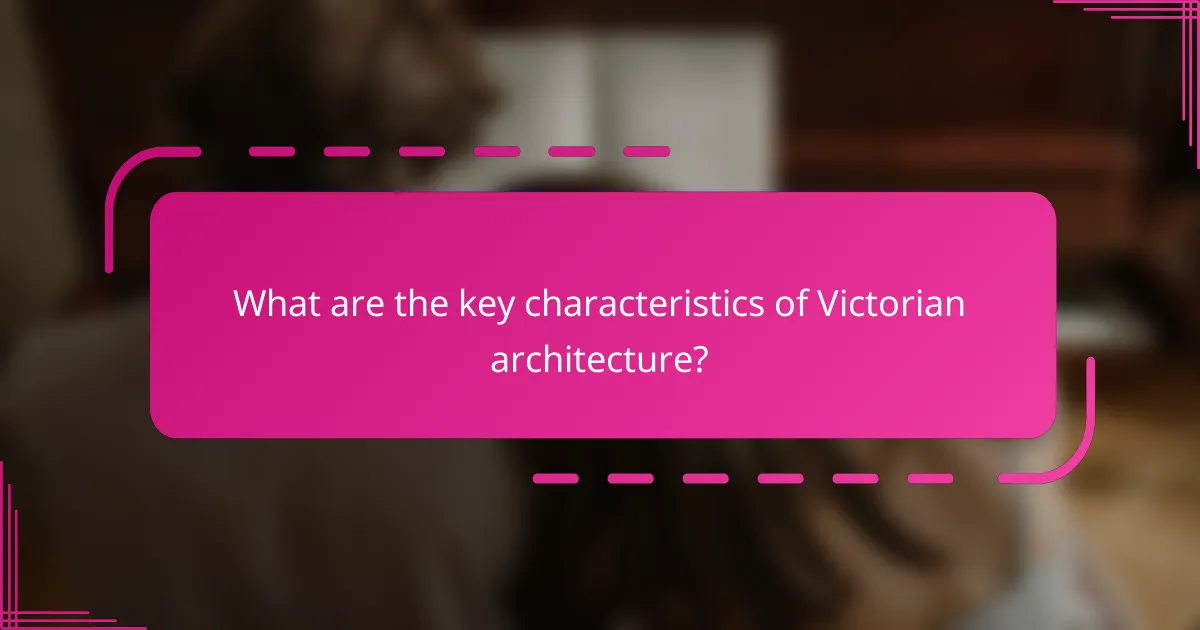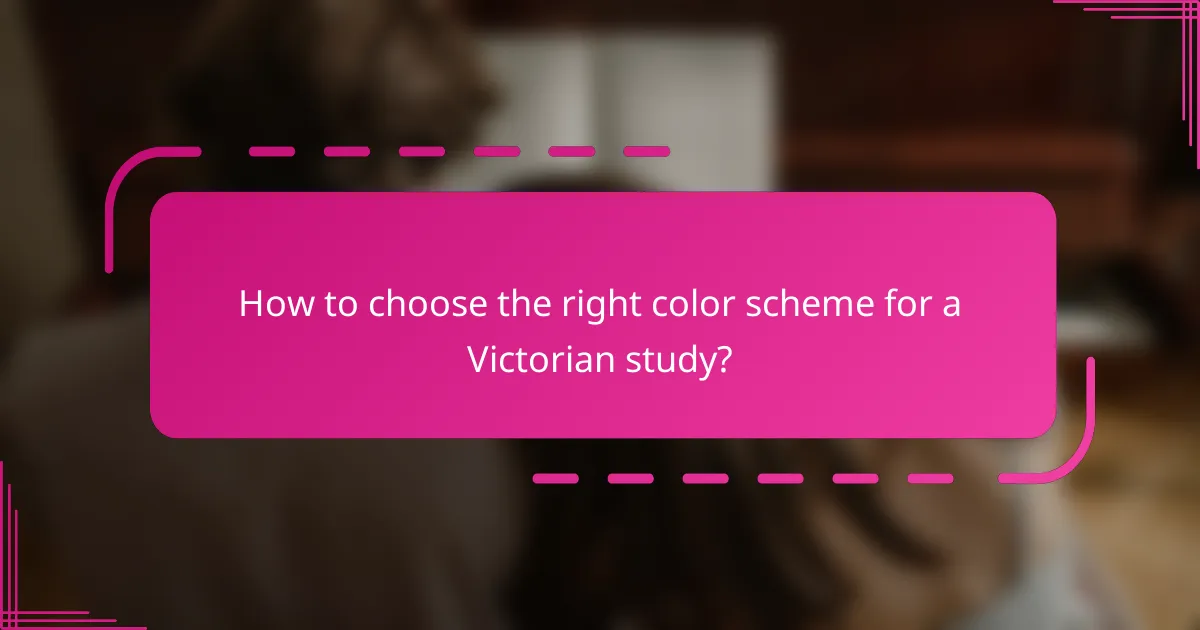The Victorian era is renowned for its intricate woodwork and rich fabrics, which together create a timeless charm that continues to inspire modern design. By incorporating authentic materials and detailed craftsmanship, one can achieve a seamless blend of historical elegance and contemporary style. Luxurious textiles such as silk, velvet, and damask further enhance the aesthetic, adding depth and sophistication to any space.

How to incorporate Victorian woodwork in modern design?
Incorporating Victorian woodwork into modern design involves blending historical craftsmanship with contemporary aesthetics. Focus on using authentic materials and intricate details to create a harmonious balance between old and new.
Use reclaimed wood for authenticity
Reclaimed wood is an excellent choice for achieving an authentic Victorian look. Sourcing wood from old buildings or furniture not only adds character but also promotes sustainability. Look for oak, walnut, or mahogany, which were commonly used in Victorian-era construction.
When selecting reclaimed wood, ensure it is properly treated to prevent pests and decay. This can enhance durability while preserving its historical charm.
Choose intricate moldings and trims
Victorian design is characterized by elaborate moldings and trims that add depth and interest to spaces. Consider using crown moldings, wainscoting, and baseboards with detailed carvings to evoke the period’s elegance.
Opt for designs that reflect Victorian motifs, such as floral patterns or geometric shapes. These elements can be painted in contrasting colors to highlight their intricacy against modern wall finishes.
Integrate vintage furniture pieces
Incorporating vintage furniture is a straightforward way to bring Victorian charm into modern spaces. Look for pieces like tufted sofas, ornate chairs, or intricately carved tables that can serve as focal points.
Mixing these vintage items with contemporary furnishings can create a balanced aesthetic. Ensure that the scale of the furniture complements your space to avoid overwhelming the room.
Opt for rich color palettes
Victorian interiors often featured rich, deep colors that evoke warmth and sophistication. Consider using shades like burgundy, emerald green, or navy blue for walls and accents to create a dramatic backdrop.
Pair these colors with lighter tones or metallics to maintain a modern feel. Textiles in luxurious fabrics such as velvet or brocade can further enhance the richness of the color scheme.
Incorporate decorative ceiling details
Decorative ceilings were a hallmark of Victorian design, often featuring intricate plasterwork or wooden beams. Adding ceiling medallions or coffered ceilings can elevate the overall design and draw the eye upward.
Consider painting these details in a contrasting color or using gold leaf to highlight their beauty. This not only adds visual interest but also pays homage to the craftsmanship of the Victorian era.

What are the best fabrics for Victorian-style interiors?
The best fabrics for Victorian-style interiors include silk, velvet, damask, and brocade, each contributing to the opulent and intricate aesthetic characteristic of the era. These materials not only enhance the visual appeal but also add texture and depth to the space.
Silk for luxurious drapes
Silk is a quintessential fabric for creating luxurious drapes in Victorian interiors. Its natural sheen and smooth texture add an element of elegance, making it ideal for large windows and formal settings.
When selecting silk for drapes, consider heavier weights that drape well and resist wrinkling. Look for rich colors or intricate patterns to complement the ornate style typical of the Victorian period.
Velvet for upholstery
Velvet is a popular choice for upholstery in Victorian-style furniture due to its plush texture and durability. This fabric can elevate the comfort and visual richness of sofas, chairs, and cushions.
Opt for deep, saturated colors like burgundy, emerald, or navy to enhance the dramatic flair of the room. Ensure that the velvet is of high quality to withstand wear while maintaining its luxurious appearance.
Damask for wallpaper
Damask is an excellent option for wallpaper in Victorian interiors, known for its intricate patterns and textures. This fabric adds depth and sophistication to walls, creating a stunning backdrop for the overall design.
Choose damask wallpapers in muted tones or contrasting colors to create visual interest. Ensure that the patterns align with other elements in the room to maintain a cohesive look.
Brocade for decorative accents
Brocade is ideal for decorative accents, such as throw pillows, table runners, and upholstery details. This richly textured fabric often features raised patterns, adding a tactile element to the decor.
When incorporating brocade, select pieces that complement the main fabrics in the room. Use it sparingly to avoid overwhelming the space, allowing its luxurious nature to shine through in key areas.

Where to find authentic Victorian furniture in London?
To find authentic Victorian furniture in London, explore antique shops, markets, online platforms, and estate sales. Each option offers unique pieces and varying price ranges, making it easier to discover the perfect addition to your collection.
Visit antique shops in Notting Hill
Notting Hill is home to several antique shops that specialize in Victorian furniture. These shops often carry a curated selection of high-quality pieces, allowing you to view items in person and assess their condition. Prices can vary widely, so it’s wise to set a budget before you start shopping.
When visiting, look for shops with knowledgeable staff who can provide insights into the history and craftsmanship of the furniture. This can enhance your understanding and appreciation of the pieces you are considering.
Explore markets like Portobello Road
Portobello Road Market is a vibrant destination for antique hunters, especially on weekends. Here, you can find a mix of Victorian furniture among other vintage items. The market atmosphere allows for negotiation, so be prepared to haggle over prices.
Arrive early to get the best selection, as popular items can sell out quickly. Keep an eye out for stalls that specialize in furniture to streamline your search.
Check online platforms like 1stdibs
Online platforms such as 1stdibs offer a vast selection of Victorian furniture from various dealers. This option allows you to browse a wide range of styles and prices from the comfort of your home. You can filter searches by specific criteria, including price range and item condition.
When purchasing online, ensure you check the seller’s ratings and return policy. This will help you avoid potential pitfalls and ensure a satisfactory buying experience.
Attend local estate sales
Estate sales can be a treasure trove for finding authentic Victorian furniture. These sales often feature items from homes filled with historical pieces, providing a unique opportunity to acquire furniture with character. Keep an eye on local listings or websites that advertise upcoming estate sales.
Arrive early to get the best deals and be prepared to act quickly, as desirable items can go fast. Bring cash, as some sales may not accept cards, and consider bringing a friend to help with heavy lifting.

What are the key characteristics of Victorian architecture?
Victorian architecture is defined by its elaborate designs, intricate woodwork, and a mix of materials that create a distinctive historic charm. Key characteristics include decorative elements, asymmetrical shapes, and a variety of roof styles that contribute to the overall grandeur of the structures.
Gabled roofs and bay windows
Gabled roofs are a hallmark of Victorian architecture, often featuring steep pitches and decorative trim. These roofs not only enhance the aesthetic appeal but also provide practical benefits like improved drainage and attic space.
Bay windows, which project outward from the main walls, are commonly found in Victorian homes. They create additional interior space and allow for more natural light, making rooms feel larger and more inviting.
Ornate detailing and embellishments
Victorian architecture is renowned for its ornate detailing, including intricate woodwork, decorative brackets, and elaborate moldings. These embellishments often reflect the craftsmanship of the era and can be found on both the exterior and interior of homes.
Common features include patterned tiles, stained glass windows, and carved stonework, all contributing to a rich visual texture. When restoring or designing a Victorian home, maintaining these details is crucial for preserving its historical integrity.
Use of brick and stone materials
Victorian architecture frequently employs brick and stone as primary building materials, which not only provide durability but also allow for a variety of textures and colors. Commonly used bricks are often laid in decorative patterns, enhancing the visual interest of facades.
Stone elements, such as lintels and sills, add to the structural integrity and aesthetic appeal. When selecting materials for renovation or new construction, consider local sourcing to maintain authenticity and support regional craftsmanship.
Asymmetrical facades
Asymmetrical facades are a defining characteristic of Victorian homes, creating a dynamic and visually stimulating appearance. This design choice often includes varying rooflines, window placements, and porch configurations, which break away from traditional symmetry.
When designing or renovating a Victorian-style home, embracing asymmetry can enhance its character. However, balance is still important; ensure that the overall composition feels cohesive despite the varied elements.

How to choose the right color scheme for a Victorian study?
Choosing the right color scheme for a Victorian study involves selecting rich, deep hues that reflect the historic charm of the era. Focus on colors that complement intricate woodwork and luxurious fabrics to create a cohesive and inviting atmosphere.
Consider the architectural features
Victorian studies often feature ornate woodwork, high ceilings, and detailed moldings. When selecting a color scheme, consider these architectural elements. For instance, dark wood trim pairs beautifully with jewel tones like emerald green or royal blue, enhancing the study’s historic character.
Choose a color palette
A successful Victorian color palette typically includes three to five colors. Start with a dominant color for the walls, such as a warm taupe or deep burgundy, and select complementary shades for accents and furnishings. Consider using muted tones for larger areas and richer colors for smaller accents to maintain balance.
Incorporate rich fabrics
Textiles play a crucial role in a Victorian study’s ambiance. Opt for heavy drapes, plush upholstery, and decorative throw pillows in luxurious fabrics like velvet or brocade. These materials can introduce additional colors and textures, enhancing the overall aesthetic while maintaining the historic charm.
Test your colors
Before committing to a color scheme, test samples on your walls. Observe how the colors look in different lighting throughout the day. This step helps ensure the chosen colors harmonize with the study’s features and create the desired mood.
